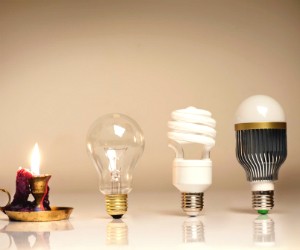Cognition at the Speed of (LED) Lights
 Since the 1970s, overhead fluorescent lighting has been standard in most office buildings. But, organizations may want to start swapping out their fluorescent lights for newer LED technology. Not only do LEDs use less power and last longer than conventional fluorescent lighting – new research suggests they hold benefits for mood and cognition.
Since the 1970s, overhead fluorescent lighting has been standard in most office buildings. But, organizations may want to start swapping out their fluorescent lights for newer LED technology. Not only do LEDs use less power and last longer than conventional fluorescent lighting – new research suggests they hold benefits for mood and cognition.
Breanne Hawes and colleagues from the Cognitive Science Team at the United States Army Natick Soldier Research Development and Engineering Center and Tufts University compared the effects of different types of light on mood, perception, and cognition in military personnel. The researchers found evidence that LED lights provide a cognitive advantage over fluorescent lights, potentially leading to a better mood and higher efficiency in the workplace.
“There is strong theoretical support from the experimental social and cognitive sciences to suggest that the positive moods and increased arousal seen at higher color temperatures will translate to enhanced cognitive task performance,” Hawes and colleagues write.
For the study, 24 volunteers (20 male and 4 female) participants came to the “lab” – a specialized tent that blocked all outside light – where they were exposed to different lighting conditions over 5 days. To control for circadian rhythm, each participant visited the laboratory at the same time on each of the five days.
Specifically, the researchers were interested in the effects of different color temperature on cognition. Color temperature is typically described in units of absolute temperature, or Kelvin. In general, higher color temperatures (≥4000 K) are bluish white and are typically referred to as “cooler” colors, whereas lower color temperature (≤3000 K) are yellowish red and are typically referred to as “warmer” colors, the researchers explain.
In this study, the fluorescent light had the lowest color temperature (3345 K), and the three different LED lights had increasing color temperatures: LED 1 (4175 K), LED 2 (5448 K), and LED 3 (6029 K). Therefore, fluorescent light was the “warmest” and LED 3 light was the “coolest.”
Each participant visited the shelter on five separate days. During each test session, the tent was illuminated using one of the four lights. Participants then started a battery of cognitive, mood, and visual tests lasting around 90 minutes. The two cognitive tasks included a challenging verbal memory task, in which participants had to correctly recall a complicated scenario, and a spatial memory task based on navigating between sites on a map. At the beginning and end of each experimental session, participants completed a self-report measure on their mood at the time.
As expected, participants performed significantly better on cognitive tasks when working under LED lights compared to fluorescent lights. Further, the higher the color temperature – that is, the cooler or bluer the light – the better their performance.
“We note that both of these effects appeared to be approximately linear; that is, not only did the LED technology reduce depression and increase arousal, but it did so most at the highest color temperatures,” the researchers explain. “This result directly supports research suggesting a positive association between increased color temperature and enhanced mood and arousal states.”
Additionally, participants reported feeling more alert and less fatigued with higher color temperature lights. A regression analysis revealed that lighting influenced mood, which reliably predicted cognitive task performance. That is, under the highest color temperature LED light, participants reported the most positive mood as well as the fastest cognitive performance.
Importantly, the authors point out that overall accuracy was consistent between lighting conditions – rather, it was participants’ reaction times that improved depending on the lighting. This suggests that using cooler LED lights has the potential to slightly improve the mood at work, as well as efficiency.
“Though participants may not improve memory for verbal or spatial information, their ability to quickly recall information and apply it to a complex cognitive task is greatly improved,” the researchers conclude.
Reference
Hawes, B. K., Brunyé, T. T., Mahoney, C. R., Sullivan, J. M., & Aall, C. D. (2012). Effects of four workplace lighting technologies on perception, cognition and affective state. International Journal of Industrial Ergonomics, 42(1), 122-128. doi:10.1016/j.ergon.2011.09.004





APS regularly opens certain online articles for discussion on our website. Effective February 2021, you must be a logged-in APS member to post comments. By posting a comment, you agree to our Community Guidelines and the display of your profile information, including your name and affiliation. Any opinions, findings, conclusions, or recommendations present in article comments are those of the writers and do not necessarily reflect the views of APS or the article’s author. For more information, please see our Community Guidelines.
Please login with your APS account to comment.